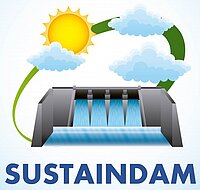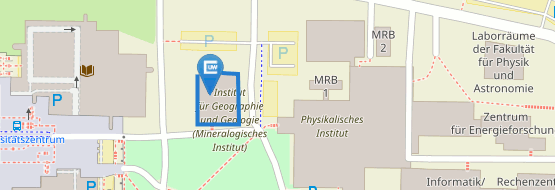SUSTAINDAM

- Subject: Past evolution of water-related activities near dams and the sensitivity of each hydropower plant to climate change and variability, LULCC near dams and propose trends scenarios of LULCC and drivers of water energy food nexus considering potential socio-economic development
- Study site: West Africa (Burkina Faso, Ghana, Cote d'Ivoire, Senegal)
- Funding: German Research Foundation, Germany through the Belmont Forum
- Duration: 18 months
- Homepage: belmontforum
- Contact: Michael Thiel, Sarah Schönbrodt-Stitt
In the call Pathways2020 (Transdisciplinary Research for Pathways to Sustainability), the Belmont Forum, in collaboration with Future Earth, supports transdisciplinary networks in the context of sustainable development with the goal of developing innovative solutions and synthesizing interactions between business, technology, institutions and the environment, climate, biodiversity and human well-being. As one of 13 projects under Pathways2020, the Belmont Forum also supports the SUSTAINDAM project.
Hydropower generation (HPG) represents the world's largest renewable electricity source. It contributes to more than 50% of the total electricity generation in West Africa (WA). In one hand, Hydropower can contribute to climate mitigation through low/no GHG emissions while in another hand, it can be impacted by climate change (CC) through changes in water cycle. WA has faced adverse effects of CC and variability associated with frequent climate extreme events such as drought and floods which affected all key sectors such as water resources for agriculture or energy demand, production, and supply. These changes are threatening efforts of countries to contribute to achieve the sustainable development goals.
Studies of this specific climate-water-energy nexus are nascent in WA while the combination of CC to other factors such as socio-economic development or land use and land cover changes (LULCC) are promised to affect the hydropower generation through changes in hydrological systems, soil erosion and siltation. The main barrier in decision making to engage in sustainable pathways is that climate projections are uncertain and the few studies on future changes of LULCC in WA are not designed to address the issue of water and energy nexus for sustainable development.
The SUSTAINDAM project aims to contribute to sustainably manage and plan the hydropower generation in WAa under climate uncertainties and LULC dynamics. This project aims to build communities of practices with HPG stakeholders (e.g., dam managers, local policy makers, representative of civil society, and association of women) to address the challenges, synergies, and trade-off in the climate land energy water nexus in WA for a sustainable management and planning of HPG. SUSTAINDAM will be focused on four dams (pilot sites) in Ghana (Akosombo), Côte d’Ivoire (Kossou), Burkina Faso (Bagré) and Senegal (Manantali), located in different climates. At each pilot site, the specific objectives are:
- To assess the past evolution of water-related activities near dams and the sensitivity of each hydropower plant to climate change and variability.
- To assess LULCC near dams and propose trends scenarios of LULCC and drivers of water energy food nexus considering potential socio-economic development.
- To evaluate benefits in decision making for hydropower generation from seasonal forecasts with lead times up to 7 months ahead.
- To improve long term planning under uncertain effects of climate and LULC change in integrating vulnerability-based analysis and traditional risk-based assessment approaches using both top-down methods (Random Forest and dynamical downscaling) and bottom-up (Decision Scaling) methods.
SUSTAINDAM is a comparative study involving different decision support tools on 4 pilot sites under different climate and socio-economic context and aims to deliver a full description of enabling conditions for sustainable development pathway under climate uncertainty. During the implementation, the project will foster sharing and common learning between the case studies. SUSTAINDAM targets the nexus between SDG 13 (climate), 6 (water) and 7 (energy) with positive effects on SDG 15 (land) and 17 (partnership) for sustainable HPG.



